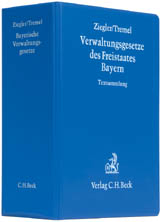
The Long-Term Residence Status as a Subsidiary Form of EU Citizenship
Martinus Nijhoff (Verlag)
978-90-04-20412-6 (ISBN)
This book studies the implications for third-country nationals of the adoption of the Long-term Residence Directive. This Directive has the potential to become a subsidiary form of EU citizenship which escapes direct control by Member States. Hence, this Directive brings the prospect of transforming Member States’ control over the relationship between territory and population. In order to arrive at this conclusion, the book looks at its content and at the way in which Member States have implemented some of its most controversial articles. It then explores how the Court of Justice could interpret those articles, taking into account its previous jurisprudence on Turkish workers and EU citizens and calling into question the compliance of several national provisions with EU law.
Diego Acosta Arcazo, Ph.D. (2010) in Law, King’s College University London, is Lecturer of Law at the University of Bristol. He has published extensively in the area of European immigration law.
Abbreviations; Acknowledgements;
Section I. Introduction, Methodology and Key Concepts:
Chapter 1. Preliminary Concepts
1. Introduction; 2. What is meant by European Union?; 3. The “Legal Other”; 4. The Concept of the “Legal Other” in this Book; 5. Outline of the Book and Research Questions;
Section II. Historical Evolution of EU Migration Law:
Chapter 2. The Involvement of the EU in Migration Regulation: From Amsterdam and Tampere to Lisbon and Stockholm
1. Introduction; 2. Why the EU Became Involved in Migration Regulation; 3. The Regulation of Immigration in the European Community before Amsterdam (1957-1999); 4. The Adoption of the Treaty of Amsterdam and the Tampere Programme (1999-2004); 5. The Adoption of the Hague Programme (2005-2009); 6. The Lisbon Treaty and the Stockholm Programme: What is the Future of Migration Regulation?; 7. Conclusion
Chapter 3. The Adoption of the Long-Term Residence Directive
1. Introduction; 2. The Importance of Adopting a Directive on Long-term Residents; 3. The Historical Antecedents; 4. The Process of its Adoption; 5. The Main Elements of the Adopted Directive; 6. The Key Provisions in the Directive; 7. Conclusion;
Section III. The Content of the Long-term Residence Directive:
Chapter 4. Scope of the Directive: Article 3
1. Introduction; 2. The Scope of the Directive; 3. Limitations; 4. Implementation; 5. Possible Interpretation by the CJEU; 6. Conclusion;
Chapter 5. Protection against Expulsion: Article 12
1. Introduction; 2. Expulsion; 3. Comparison with the Commission’s Proposal and Directive 2004/38; 4. Implementation; 5. Possible Interpretation by the CJEU; 6. Conclusion;
Chapter 6. Residence in Other Member States: Article 14
1. Introduction; 2. The Possibility to Reside in another Member State; 3. Limitations; 4. Implementation; 5. Possible Interpretation by the CJEU; 6. Conclusion;
Section IV. The Integration Conditions:
Chapter 7. Origin and Development of the Integration Conditions
1. Introduction; 2. The Origins of Integration Conditions: Citizenship Legislations; 3. Integration in Other European Instruments: the Family Reunification Directive; 4. Conditions for Acquiring Long-term Residence Status; 5. The Integration Conditions; 6. Implementation; 7. Conclusion;
Chapter 8. Political Motivations for the Introduction of Integration Requirements
1. Introduction; 2. A Categorisation of the Political Motivations for the Introduction of Integration Conditions in order to Acquire Long-term Residence Status; 3. Conclusion
Chapter 9. Possible Interpretation of the Integration Conditions by the CJEU
1. Introduction; 2. Possible Steps in the Interpretation of the Integration Conditions; 3. The CJEU’s Ruling in Chakroun; 4. Conclusion;
Section V. Conclusion:
Chapter 10. Conclusion
1. Is the European Union Construction a “Legal Other”?; 2. Policy Recommendations; References: 1. Books and Articles; 2. Table of Cases; 3. Legislative and Policy Acts; 4. Journal Articles; Biography; Index.
| Reihe/Serie | Immigration and Asylum Law and Policy in Europe ; 23 |
|---|---|
| Sprache | englisch |
| Maße | 160 x 240 mm |
| Gewicht | 601 g |
| Themenwelt | Recht / Steuern ► EU / Internationales Recht |
| Recht / Steuern ► Öffentliches Recht ► Besonderes Verwaltungsrecht | |
| Recht / Steuern ► Öffentliches Recht ► Verfassungsrecht | |
| Sozialwissenschaften ► Politik / Verwaltung | |
| Sozialwissenschaften ► Soziologie | |
| ISBN-10 | 90-04-20412-1 / 9004204121 |
| ISBN-13 | 978-90-04-20412-6 / 9789004204126 |
| Zustand | Neuware |
| Haben Sie eine Frage zum Produkt? |
aus dem Bereich


